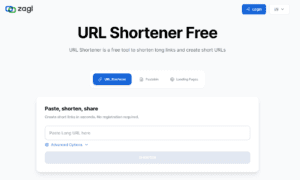In today’s digital-first world, influencer marketing has emerged as a transformative force in the way brands connect with their audience. From micro-influencers making waves in niche markets to celebrities with massive followings, the impact of this strategy is undeniable. In this article, we’ll dive into how influencer marketing is shaping brand strategies, offering a complete guide for leveraging this modern marketing tool.
What is Influencer Marketing?
Influencer marketing is a strategic partnership between brands and individuals who have a strong online presence and influence over their followers. These individuals, known as influencers, promote products or services to their audience, often by incorporating them into authentic, relatable content. Businesses can further enhance their influencer marketing strategy by using a product AI generator to create compelling product descriptions and promotional materials that align with an influencer’s content style, ensuring consistency and engagement across campaigns.
This marketing approach thrives on trust. Influencers are seen as experts or relatable figures within their niches, and their recommendations carry weight. Unlike traditional advertising, influencer marketing leverages the influencer’s credibility to build a direct, personal connection with potential customers.
For example, a fitness enthusiast on Instagram might collaborate with a health supplement brand to promote their protein shakes through workout routines or meal plans. Similarly, a tech YouTuber could review a new gadget, offering their insights and endorsements.
What makes influencer marketing stand out is its ability to humanize brands, making them approachable and trustworthy in the eyes of consumers.
Types of Influencers: By Size and Reach
Not all influencers are created equal. They vary based on their follower count, engagement rate, and niche focus. Understanding the types of influencers is crucial when crafting a brand strategy.
Nano-Influencers (1K–10K Followers)
Nano-influencers are everyday individuals with a small but highly engaged audience. They are perfect for hyper-targeted campaigns and are often more affordable than larger influencers. Brands working with nano-influencers can achieve authentic connections within localized or niche markets.
Micro-Influencers (10K–100K Followers)
Micro-influencers are widely considered the sweet spot for influencer marketing. They strike a balance between reach and engagement, often having a loyal following within a specific niche, such as beauty, fitness, or tech.
Macro-Influencers (100K–1M Followers)
Macro-influencers are industry professionals, celebrities, or individuals who’ve grown a large online following. While they can drive significant brand awareness, their engagement rates might be lower than micro-influencers due to the diversity of their audience.
Mega-Influencers (1M+ Followers)
Mega-influencers, such as A-list celebrities or global personalities, have an enormous reach but often charge premium rates. These influencers are best suited for brands looking to establish broad awareness on a global scale.
Why Use Influencer Marketing?
Influencer marketing isn’t just a trend—it’s a proven strategy that offers unparalleled benefits for brands. Here’s why it’s worth the investment:
Builds Trust and Authenticity
Consumers are more likely to trust recommendations from people they admire than traditional advertisements. Influencers offer an authentic voice that resonates with their audience, fostering trust and credibility.
Drives Targeted Engagement
By collaborating with micro-influencers or influencers in specific niches, brands can reach a highly targeted audience.This ensures that marketing efforts are directed toward people who are genuinely interested in the product or service.
Boosts Brand Awareness
Influencers have the power to expose brands to thousands, if not millions, of potential customers. Their content can generate buzz, increasing visibility and positioning your brand in front of the right audience.
Improves Conversion Rates
Studies have shown that influencer recommendations drive higher conversion rates compared to traditional marketing methods. Followers are often inspired to make purchases based on the influencer’s endorsement. Beyond influencer collaborations, brands are leveraging AI in SEO to optimize their content and improve discoverability. AI-powered tools help analyze influencer performance, identify trending keywords, ensuring maximum visibility and engagement.
How to Create a Influencer Marketing Strategy in the 5 Steps
A well-thought-out influencer marketing strategy can yield impressive results. Here’s a step-by-step guide:
1. Define Your Goals
Start by identifying what you want to achieve. Are you looking to boost brand awareness, increase sales, or launch a new product? Clear goals will help you measure success.
2. Identify Your Target Audience
Understanding your audience is critical. Analyze demographics, interests, and behaviors to determine which influencers align with your ideal customer profile.
3. Find the Right Influencers
Research influencers who match your brand values and appeal to your target audience. Look beyond follower count—engagement rate, authenticity, and content quality matter more.
4. Collaborate on Content
Work closely with influencers to create content that feels genuine and aligns with their style. Give them creative freedom while ensuring the messaging stays consistent with your brand.
5. Track Performance and Optimize
Monitor metrics such as engagement rates, website traffic, and conversions to evaluate the campaign’s effectiveness. Use this data to refine future strategies.
Influencer Marketing Mistakes to Avoid
While influencer marketing can be incredibly effective, it’s not without pitfalls. Here are common mistakes brands should steer clear of:
Partnering with the Wrong Influencers
Choosing influencers solely based on follower count can backfire. Ensure their audience aligns with your target demographic and that their content reflects your brand values.
Neglecting to Define Goals
Without clear objectives, campaigns can lack direction and fail to deliver results. Always set measurable goals from the outset.
Overlooking Authenticity
If the collaboration feels forced or overly promotional, it can damage both the influencer’s and your brand’s credibility. Authenticity should be a top priority.
Ignoring Contractual Agreements
Ensure all terms are clearly outlined in a contract, including deliverables, deadlines, and compensation. This avoids misunderstandings and ensures accountability.
How to Track Influencer Marketing Campaigns
Tracking the performance of influencer marketing campaigns is essential to determine ROI and refine your strategy. Here are some key methods:
Monitor Engagement Metrics
Keep an eye on likes, comments, shares, and overall reach to gauge how well the content resonates with the audience.
Use Tracking Links and Promo Codes
Unique links and discount codes help track conversions directly attributable to an influencer’s efforts.
Analyze Website Traffic
Use tools like Google Analytics to measure how many visitors land on your website via influencer-generated content.
Leverage Social Listening Tools
Tools like Hootsuite or Sprout Social can help monitor brand mentions and track the campaign’s broader impact on brand sentiment.
Create a Successful Influencer Marketing Strategy for Your Brand
To build a successful influencer marketing strategy, keep the following tips in mind:
- Foster Long-Term Relationships: Instead of one-off collaborations, develop ongoing partnerships with influencers who genuinely align with your brand. This builds trust and consistency.
- Leverage User-Generated Content: Encourage influencers to create content that you can repurpose across your own marketing channels, amplifying the campaign’s reach. Additionally, integrating influencer marketing with event marketing strategies can further boost engagement and create memorable experiences for your audience.
- Experiment with Platforms: While Instagram and YouTube are popular, don’t overlook platforms like TikTok, LinkedIn, or Twitch, depending on your target audience.
- Engage Nano and Micro-Influencers: Smaller influencers often deliver higher engagement rates and authenticity, making them valuable for specific niches.
- Measure and Adapt: Regularly analyze performance data to identify what works and optimize for future campaigns.
Top Influencer Marketing Tools
To run a successful influencer marketing campaign, having the right tools at your disposal is essential. These tools streamline the process of finding influencers, managing campaigns, and tracking performance, ensuring that your efforts are efficient and data-driven. Here are some of the top influencer marketing tools brands are leveraging today:
1. Upfluence
Upfluence is an all-in-one influencer marketing tool that uses AI to help brands find the best influencers for their campaigns. It enables you to search through a massive database of influencers and filter by engagement rates, audience location, or industry. The platform also provides analytics to measure campaign ROI and monitor influencer performance in real time.
2. GRIN
GRIN is a favorite among e-commerce brands, providing seamless integration with platforms like Shopify. It allows businesses to directly manage influencer relationships, create personalized campaigns, and track performance metrics like clicks, sales, and impressions. GRIN’s focus on authentic relationships makes it a go-to tool for long-term partnerships.
3. HypeAuditor
HypeAuditor specializes in influencer discovery and audience analysis. It provides detailed reports on influencer performance, including insights into fake followers, audience demographics, and engagement rates. This tool is ideal for ensuring that you’re partnering with authentic influencers who can deliver real value to your brand.
4. Heepsy
Heepsy is a simple yet powerful influencer search tool. It allows brands to filter influencers by category, audience size, location, and engagement metrics. It’s particularly useful for small businesses and startups looking to find cost-effective influencers for niche campaigns.
5. CreatorIQ
CreatorIQ is an enterprise-grade platform that helps brands manage influencer marketing campaigns at scale. It integrates with social media platforms to provide in-depth insights into influencer content performance. With advanced AI-powered analytics, CreatorIQ helps businesses make data-driven decisions.
6. BuzzSumo
BuzzSumo is a versatile tool that helps identify top-performing content and influencers in your industry. You can use it to find thought leaders, track social shares, and monitor industry trends, making it an excellent choice for brands focused on content-driven influencer strategies.
7. NinjaOutreach
NinjaOutreach simplifies influencer outreach and relationship management. The platform enables brands to search for influencers, send personalized outreach emails, and track campaign results all in one place. Its CRM-like features make it an efficient tool for building lasting influencer relationships.
8. Traackr
Traackr focuses on influencer relationship management and performance tracking. Its data-driven approach provides brands with insights into influencer content impact, helping them optimize future campaigns. Traackr is especially popular among enterprise-level businesses seeking global influencer partnerships.
9. Klear
Klear is a versatile influencer marketing tool that offers robust analytics and influencer discovery capabilities. Its audience insights feature allows brands to understand the demographics, interests, and engagement behavior of an influencer’s followers, ensuring optimal campaign targeting.
By leveraging these tools, brands can simplify the complex process of influencer marketing while maximizing the impact of their campaigns. Whether you’re a small business or a large enterprise, incorporating these platforms into your strategy can help you discover influencers, build authentic relationships, and track your success.
Conclusion
Influencer marketing is reshaping brand strategies by offering authentic connections, driving engagement, and boosting conversions. Whether you’re a small business or a global brand, leveraging the power of influencers can help you stay competitive in today’s digital landscape. By understanding the types of influencers, avoiding common mistakes, and creating a well-planned strategy, your brand can harness the full potential of this modern marketing tool.
Author Bio:
Ombir Sharma is the Managing Partner at Tecuy Media, leveraging extensive experience in digital marketing to drive business growth. He also leads LinksFrog, a company specializing in high-quality SaaS backlinks and strategic link-building to enhance website rankings and organic traffic.
With a strong foundation in SEO, content strategy, keyword research, and analytics, Ombir excels at crafting engaging, optimized content and implementing innovative SEO strategies that deliver measurable results. His passion for staying ahead of industry trends allows him to blend creativity with data-driven strategies, creating impactful online experiences that fuel success.





























